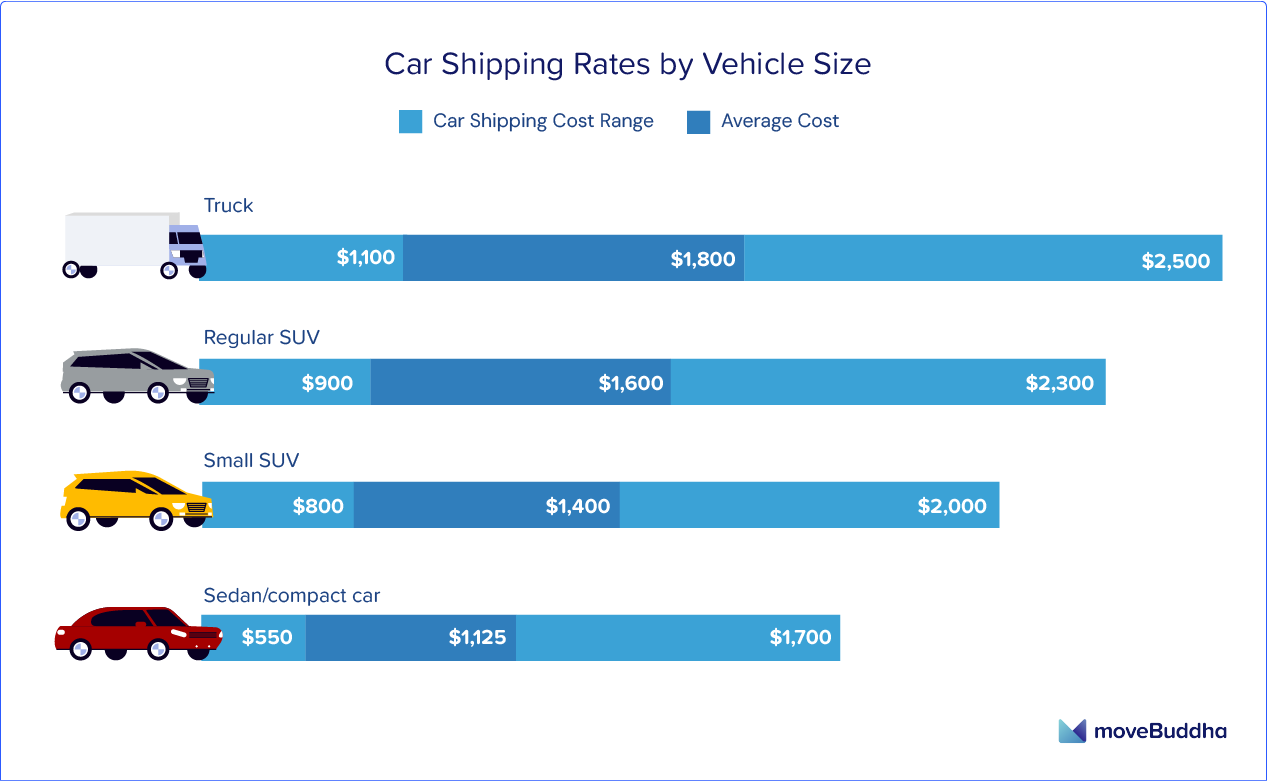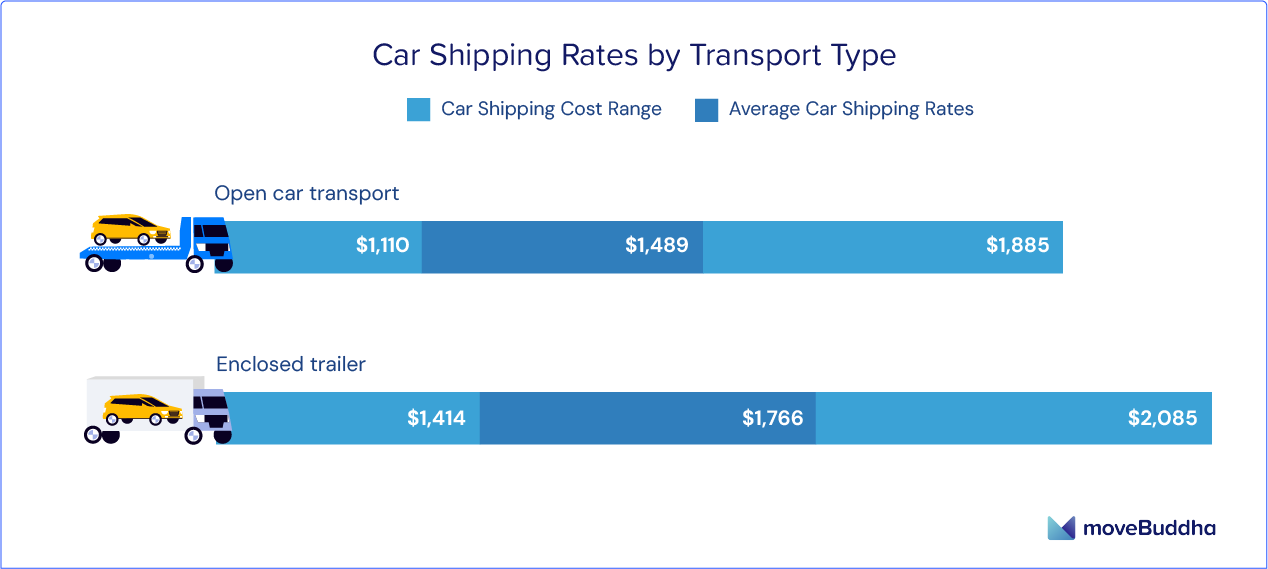
Car Sales Statistics
From top-selling models to market analysis, dive into key data and stay informed about the dynamic automotive industry through our car sales statistics guide.

People spend a lot of money on their vehicles. In fact, on average, an American spends around 16% of their total budget on transportation, including car and fuel expenses. This makes transportation the second-largest expenditure after housing.
Given the significant investment, it's not surprising that the car sales industry is continually changing to meet the evolving needs of buyers. In this context, we have delved deeply into the world of car sales and shipping statistics to provide a more comprehensive understanding of the latest trends and developments in the industry.
Key Takeaways
- The global motor vehicle sales exceeded 81.6 million units.
- China has become the leader of the global automotive market, with a recorded 23.24 million automobile registrations.
- Of the overall unit production, 72% comprised passenger cars (61 million units).
- German auto suppliers claimed top spots for biggest suppliers globally.
- The U.S. auto market reached 15.9 million in motor vehicle sales.
- Ford F-Series maintained its position as the best-selling vehicle in the US.
- The market size of the car shipping was projected to reach $9.9 billion in 2023.
- The average cost to ship a car in the US is approximately $950.
Global Car Sales Statistics
In 2022, the global automotive industry witnessed noteworthy trends and statistics that shaped the market. With approximately 85 million motor vehicles produced worldwide, there was a 6% increase compared to the previous year, indicating a resilient industry overcoming challenges.
Global motor vehicle sales show signs of recovery
China has become the hub of the global automotive market, leading in both demand and supply. In 2022, China recorded approximately 23.2 million automobile registrations, a 10% increase from the previous year. The US secured the second place by recording about 14 million light vehicle sales. This increase has contributed significantly to global motor vehicle sales exceeding 81.6 million units.
Although there was a 1.4% year-over-year decline in global motor vehicle sales in 2022, the market showed signs of recovery, mainly due to the increasing demand for passenger cars. Hence, of the overall unit production, 72% comprised passenger cars, totaling around 61 million units.
Global passenger car sales
The passenger car market is expected to continue growing, with a projected revenue of $1,9 billion in 2023 and an annual growth rate (CAGR 2023-2027) of 1.72%.
By 2027, this market is estimated to reach a volume of $2 billion and witness approximately 74 million vehicle sales. The volume-weighted average price of passenger cars is projected to be around $28 thousand in 2023.
The United States is expected to be a key player in the global passenger car market, generating the highest revenue of $554 billion in 2023.
The leading global automotive suppliers
German automotive suppliers demonstrate their global prowess, claiming three out of the top five spots among the leading automotive suppliers based on revenue in 2022.�
Bosch, standing at the pinnacle with 52.6 billion euros, spearheads the list. ZF Friedrichshafen secures the third position with 39.9 billion euros, while Continental closely trails at fourth place with 39.4 billion euros.
Denso from Japan secured the second position with a formidable revenue of 44.5 billion euros, and in fifth place comes Hyundai Mobis (South Korea) with 38.2 billion euros.
US Car Sales Statistics
Due to pandemic restrictions, automotive sales volume declined in Q2 2020 and continued to dip in 2021. Despite signs of recovery in 2022, persistent supply chain challenges still affect vehicle availability.
The overall price inflation has introduced disruptions to demand. U.S. motor vehicle sales reached 14 million in 2022, partly influenced by a decline in light truck retail sales during that year.
However, in November 2023, light trucks, with just around 12.3 million unit sales, retained their position as the largest segment in the U.S. auto market, reaching 15.9 million in overall motor vehicle sales. This figure represented an impressive year-on-year increase of approximately 13.6%.
Best-selling vehicles in the US
The top-selling vehicles in the US throughout 2022 underscore the sustained preference for trucks and SUVs. Ford F-Series has maintained its position as the best-selling vehicle in the US for over four decades, with Ram Pickup and Chevrolet Silverado also enjoying considerable popularity.
Toyota RAV4 and Honda CR-V stand out as leading choices in the crossover SUV category, while Toyota Camry continues to dominate as the best-selling sedan. Together, these vehicles constituted more than 10% of the year's total new car sales in the country.
Used vs. new light vehicles and EVs
In the third quarter of 2023, the landscape of light vehicles and electric vehicles (EVs) in the United States reveals intriguing trends. With approximately 288.5 million vehicles in operation, new registration volumes are gradually increasing, reaching an annualized figure of 14.9 million.

On the other hand, used vehicle registrations saw a 14% decline since 2021 due to low volumes and higher prices impacting these transactions.

EVs and hybrids are on the rise, with Tesla still leading the way in the EV market despite increased competition. The market share of EVs in vehicles in operation is growing faster than other fuel types.

Used vs. New Light Vehicles and EVs
In the third quarter of 2023, the landscape of light vehicles and electric vehicles (EVs) in the United States reveals intriguing trends. With approximately 288.5 million vehicles in operation, new registration volumes are gradually increasing, reaching an annualized figure of 14.9 million.

On the other hand, used vehicle registrations saw a 14% decline since 2021 due to low volumes and higher prices impacting these transactions.

EVs and hybrids are on the rise, with Tesla still leading the way in the EV market despite increased competition. The market share of EVs in vehicles in operation is growing faster than other fuel types.

Car Shipping Statistics
The car shipping industry in the US plays a substantial role in the broader automotive landscape, with a projected market size of $9.9 billion in 2023. This industry’s performance is intricately linked to new car and light truck sales, where heightened sales translate to an increased demand for vehicle transportation, particularly from manufacturers to dealerships and various markets, resulting in a notable upswing in vehicle freight.

The average cost to ship a car
Currently, the United States houses 4,848 auto transport businesses. Each business is unique in its offerings and prices. However, the typical cost to ship a car in the US can be anywhere from $700 to $1500, with the average for 1000 miles being $950.
To have a clearer idea of the average shipping cost, some factors must be considered, including the transportation distance, the type of vehicle, and the chosen shipping method.
Car shipping cost per mile
The cost of car shipping per mile highly determines the overall cost of transporting vehicles across different distances. The average per-mile cost for 500-mile distances ranges from $1.36 to $3.00 due to the relatively shorter travel distance.
On the other hand, journeys exceeding 2,500 miles reduce the cost per mile to $0.55 or $0.72, reflecting a more economical rate for longer hauls.
Car shipping rates by vehicle size and type
Car shipping rates vary by the size and type of the vehicle, with cost ranges tailored to accommodate different automotive categories.
For sedan and compact car transportation, the shipping cost falls within the range of $550 to $1,700, with an average cost of $1,125. Moving up in size, for truck transport, the cost range expands to $1,100 to $2,500, with an average cost of $1,800.

Car shipping rates by transport type
The chosen transport type also influences car shipping rates. For those seeking the added protection of an enclosed trailer, the cost falls within the range of $1,414 to $2,085, with an average shipping rate of $1,766.
On the other hand, open car transport, which exposes vehicles to the environmental elements during transit, comes at a comparatively lower cost range of $1,110 to $1,885, with an average shipping rate of $1,489, saving up to $300.

Use our free moving cost calculator to determine how much your move will cost.
Best Car Shipping Companies
When transporting their vehicles, users usually prefer car shipping companies with a proven track record of reliability and efficiency based on their past positive experiences. Our research team has compiled a comprehensive list of the top 5 car shipping companies.
For those seeking an all-encompassing solution, SGT Auto Transport is hailed as the best overall choice, standing out for its comprehensive and reliable services. Easy Auto Ship earns its reputation as the best for quick pickup, catering to those with time-sensitive transportation needs.
Montway Auto Transport is the top choice for cross-country shipping, demonstrating efficiency and expertise in handling long-distance vehicle transportation. Sherpa Auto Transport is recognized as the best for individuals placing a premium on accurate pricing, offering transparent and precise cost estimates.
Finally, for those prioritizing insurance coverage, Ship A Car Direct is acknowledged as the best, providing peace of mind with comprehensive and reliable insurance options.
In Conclusion
Despite the challenges, the automotive industry has shown remarkable resilience over the years. In fact, global motor vehicle sales have exceeded 81.6 million units, and data revealed dynamic preferences for trucks and SUVs. Car shipping also played a crucial role in the automotive landscape, with a projected market size of $9.9 billion in 2023.
These insights provide a comprehensive view of market dynamics and consumer preferences. As the sector evolves, understanding these statistics is vital for industry stakeholders and consumers navigating the complex landscape of car sales and shipping.





